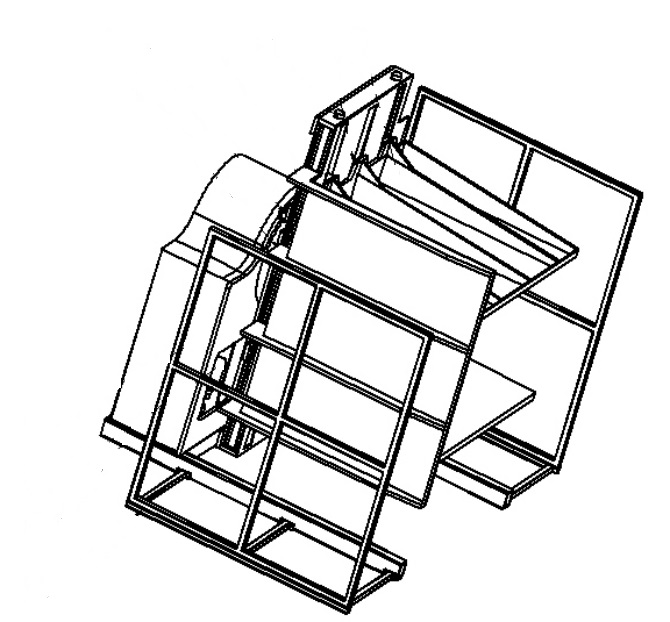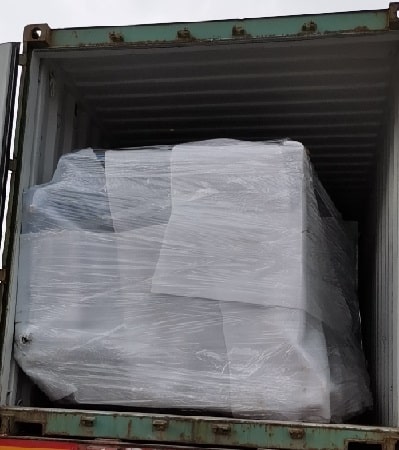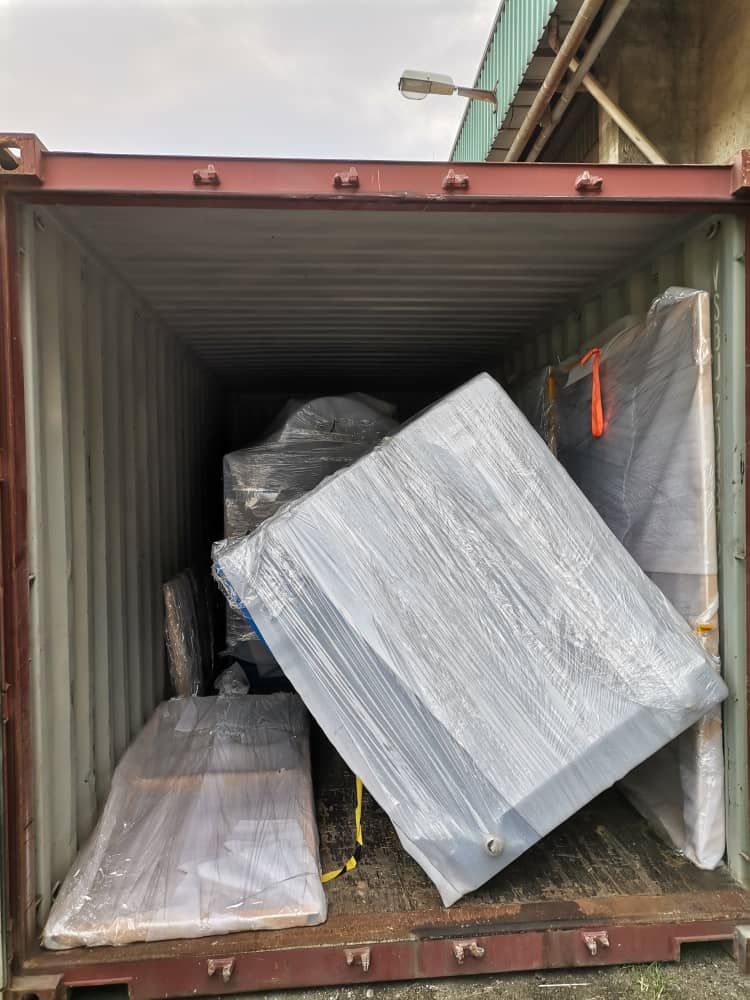Pallet inverter is the flipping equipment for warehouse and workplaces where the cargo loaded on pallets and skids need to be tipped for the reason of changing the pallets from manufacturer's system pallets (the plastic hygenic pallets are the most) to the wooden shipping pallets. It's also can be seen as the auxiliary equipment (
pallet retriever ) for removing the freezer spacer in large coldchain facility or big frozen food industries. Where this equipment provides the convenience to users when turnover the whole load 90 degree which the workers can pull out the freezer spacers without unstacking the cartons one by one.
But this practical machine is massive in size and heavy with it's weight up to 2 tons. Take a normal pallet load as an example, the pallet inverter overall size should reach 2 meters in length and 1.8 meters in width as well as 3.6 meters in height if the pallet is L1.2*W1.2*H1.8 meters. This super large dimension makes it very difficult when doing the loading for overseas shipment as the standard containers are only about 2.4-2.6 meters tall. It's necessary to have the machine dismantled into few segments. The best way is to separate the flipping body with the frame base from the joint of the slewing drive:

But due to the heavy weight of these main parts, it's still important to fastern the machine with reliable strength and good condition. The collision between the moving parts or the machine and the container can cause some of the key components hurt with severe damage. And the damage leads to the malfunction of the pallet inverter after the installation.


The previous case of shipping the pallet inverter to our customer in Southeast Asia gave us lots of experience. The whole container was tipped during the loading in ports or maybe the transportation between warehouse and ports, the machine was turned over with a 45 degree inside the container. The sequencing collision has damaged the slewing drive of the machine and it cost us a huge amount for the aftersale service.
Now, as we have learned a lesson from it, loading the machine into the container has received much more attention from both our operators and inspectors. We will make sure the dismantled segments are well fasterned with the wall of the container by nylon bands to ensure there will be no collision even if the whole container has some tipping or turnover during the shipment. We look forward to providing better service as we are always learning and gaining more from the experience and research.




